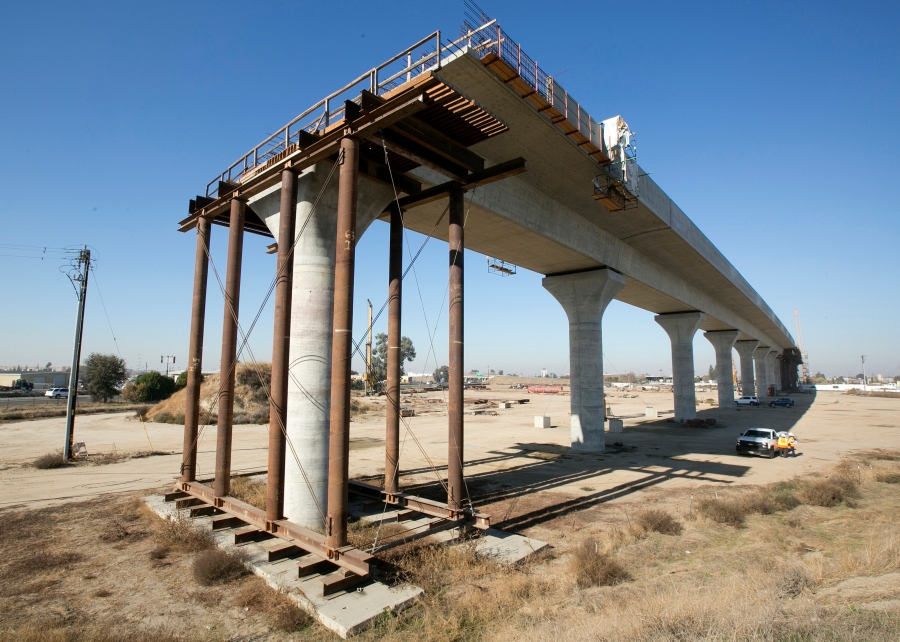(BCN) — With a recent vote, high-speed rail moves one step closer to rolling down the tracks in the Bay Area. When completed, passengers will be able to travel by train from San Francisco to Los Angeles in under three hours. On Aug.
18, the California High-Speed Rail Authority board voted unanimously to approve the environmental impact report along the 49-mile section from San Francisco to San Jose. Board member Nancy Miller was absent. This section of the project is estimated to cost more than $5.
3 billion. Anthony Lopez, spokesperson for the California High-Speed Rail Authority, said the next steps are finalizing the design and preconstruction. Cost estimates for Phase 1 between San Francisco and Anaheim range from $76.
6 billion to $113 billion. Lopez said the board’s recent action extends environmental clearance to more than 420 miles. The environmental reports for the final two Southern California sections are planned for 2023-24.
Multiple off-road ATVs, motorcycles perform sideshow on Bay Bridge: CHP Rod Diridon, chair emeritus of the California High-Speed Rail Authority board, said prior to the pandemic, almost 200,000 people commuted each day from the Central Valley to the Bay Area, driving two to three-and-a-half hours each way. “You arrive exhausted. You had to leave before the kids got up,” he told San Jose Spotlight.
“When you get home, it’s after the kid’s little league game and maybe you get there in time to tuck them in. That’s not a fit lifestyle. ” Once complete, high-speed rail will connect San Jose with Fresno in one hour, a huge time saver for people who chose to move out of the area in search of affordable housing, Diridon said.
Trains traveling at 200 miles per hour will significantly shorten travel times for commuters from the Central Valley. “The most serious impediment for high tech and employment in our area is a lack of housing,” Diridon said. “It will give Silicon Valley a new lease on life because we gain access to the affordable homes in the Central Valley.
” The high-speed rail line will feed into San Jose through Diridon Station, which is set to become a major transit hub with BART’s expansion from the north. To connect the Central Valley to Gilroy, and then San Jose, the project will require tunneling through Pacheco Pass. Years in the making The rail authority was created by the state Legislature and Gov.
Pete Wilson in 1996. In November 2008, voters approved a $9. 95 billion bond measure toward the construction of a high-speed train, with Phase 1 from San Francisco to Los Angeles/Anaheim.
In 2015 the project broke ground in the Central Valley. As cost overruns and delays extended the timeline, a rail line is anticipated to link Bakersfield to Merced by 2030, and the Bay Area by 2033. Completing the route from Los Angeles to San Francisco could cost $105 billion, according to a state estimate.
State Assemblymember Ash Kalra said high-speed rail will be a critical connection from the Central Valley both to the Bay Area and Los Angeles. The project will be also a job generator and will provide environmental benefits with less cars on the road, he said. “I look forward to San Jose’s Diridon Station being a huge, essential point for high-speed rail to connect with transit throughout the Bay Area, and ultimately to connect us to the rest of the state,” he told San Jose Spotlight.
KRON On is streaming live news now . embed-container { position: relative; padding-bottom: 56. 25%; height: 0; overflow: hidden; max-width: 100%; } .
embed-container iframe, . embed-container object, . embed-container embed { position: absolute; top: 0; left: 0; width: 100%; height: 100%; } Brian Schmidt, policy and advocacy director for Green Foothills, said it’s concerning how high-speed rail will impact the migration of bobcats, mountain lions and elk in Coyote Valley and Pacheco Pass.
Green Foothills wants to see this mitigated with wildlife-friendly crossings. “Both of those areas are very important migration corridors,” he said. “Coyote Valley is one of two corridors connecting the relatively isolated Santa Cruz Mountain Range to the rest of the natural habitats in the state.
” With an eye to the environment, high-speed rail will share electrified Caltrain tracks. Overhead wiring is already in place at Diridon Station, with $800 million of its funding paid through the high-speed rail budget, Diridon said. Boris Lipkin, California High-Speed Rail Authority Northern California regional director, said if federal, state and regional funding was in place, high-speed rail could be completed between San Francisco and Los Angeles in just over 10 years.
But getting the funding is the challenge. Lipkin said in the era of climate change, it’s essential to have people use trains powered by renewable energy rather than cars and planes. “Turning that into reality is a huge undertaking,” he said.
“The scale of this thing is massive. . .
but the benefits are also massive. ” Copyright © 2022 Bay City News, Inc. .
From: kron4
URL: https://www.kron4.com/news/bay-area/high-speed-rail-to-san-jose-passes-another-hurdle/



